So, you are determined to have your own garden on the windowsill. However, the plant choice largely depends on the conditions you can offer to your green pet. Caring for indoor plants during the heat ensures their health and survival. Let’s look at the basic aspects provided by Flowwow experts for caring for potted flowers and try to choose the perfect plant for your conditions.
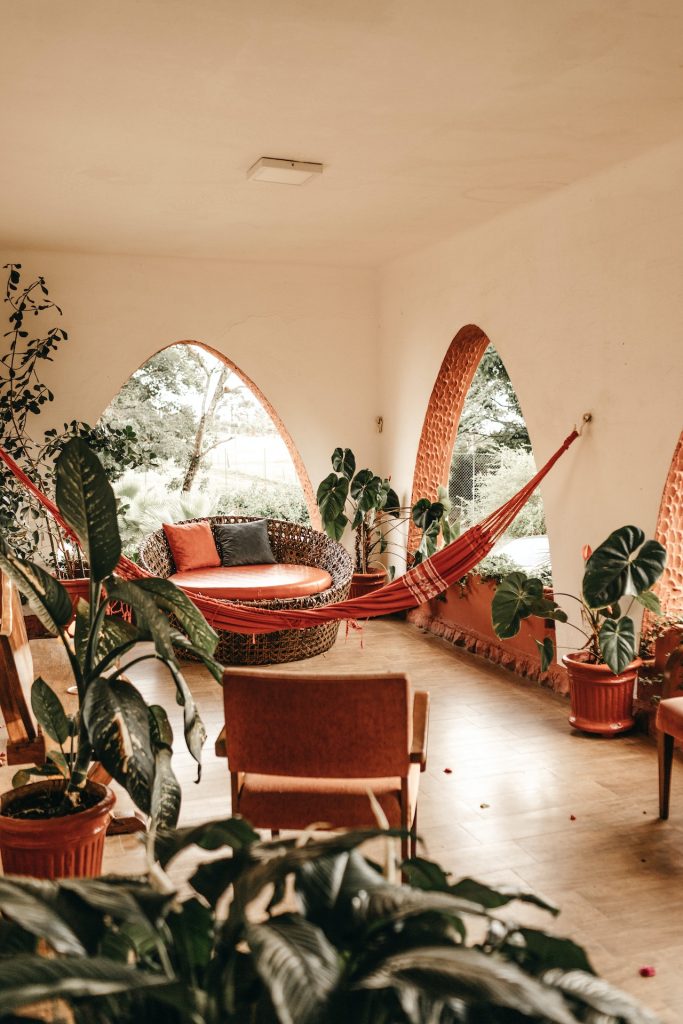
Choosing a place for the pot
Caring for indoor plants starts with choosing an optimal area where they will stand and receive enough light, warmth, and fresh air. Flowers do not like frequent relocations, so it is better to determine one area for them, two at maximum: winter and summer. Do not place flower pots near artificial heat sources, such as radiators or air conditioners. In addition to light and water, most plants require fresh air. So think about how you will ventilate your home garden. It is best to do this once every 2-3 days, and if the air in the room is dehydrated – daily. At the same time, a group of popular indoor plants are afraid of drafts. They should be placed away from windows and openings that you often open. For example, phalaenopsis orchids can catch a cold from cold wind.
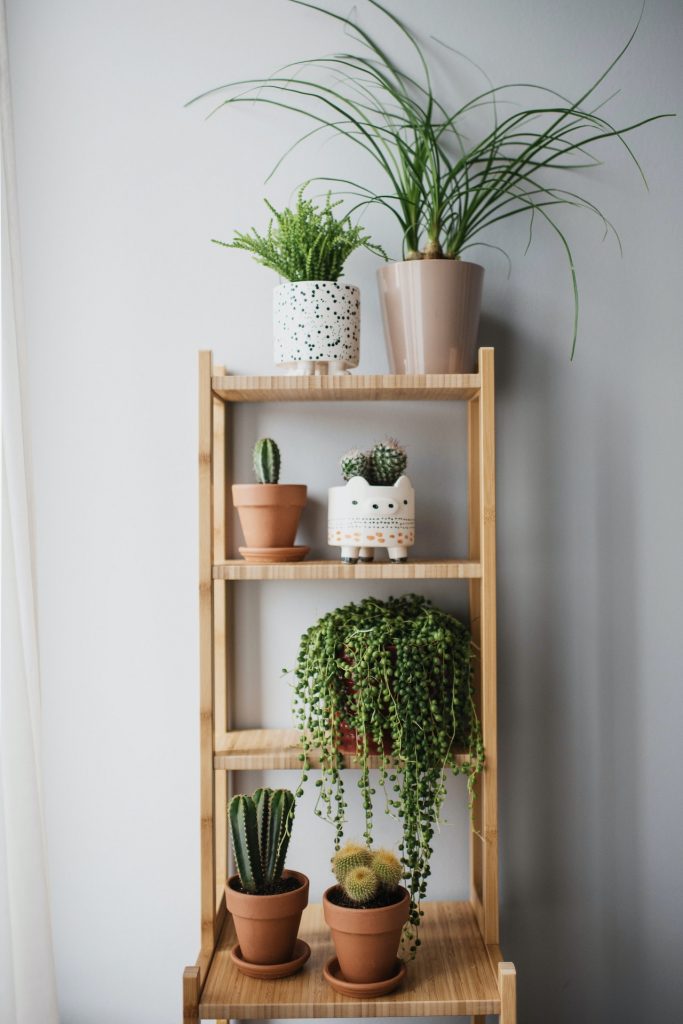
Sunlight
Most potted flowers suffer from direct sunlight and can even get leaf burn. For example, delicate spathiphyllum fades and turns yellow if you put it in direct sunlight. Do not place flowers on the south side or create a semi-shade for them: blinds, bamboo curtains, or a small screen will do just fine. Even bonsai trees, such as ginseng, should be shaded.
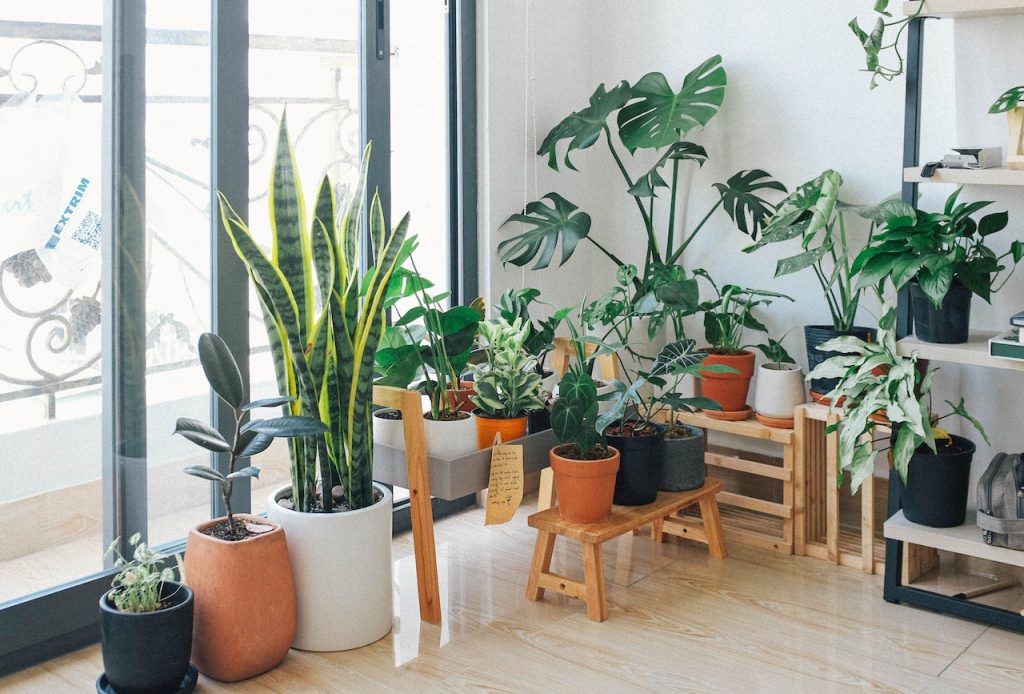
Do you need to turn the flowerpot so that the shoots get sunlight from both sides? Here is a detailed answer to this question:
- Plants need to be turned at most 10 degrees each day. So in a couple of weeks, the flower will rotate 180 degrees.
- Some climbing plants twist clockwise, others counterclockwise, and if you go ‘against the current,’ they will feel bad, literally.
- You cannot turn the pot when the plant is about to bloom. Even a smooth turn from the sun can cause the plant to drop all its buds.
Watering
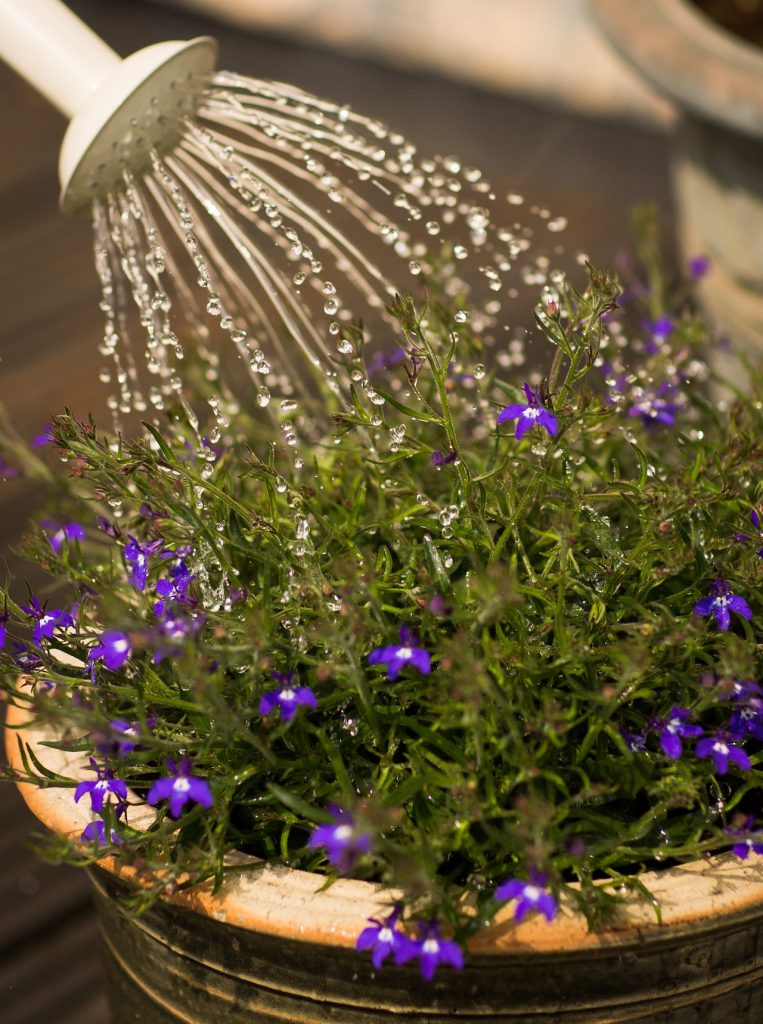
Let’s start with the basic rules that are the same for all indoor flowers:
- Water only with set-aside water. Too cold water can slow down the growth of plants, and too warm can cause root rot.
- Provide good drainage. As a rule, plants are more resistant to lack of moisture than excess. There must be a layer of drainage and holes for excess water to drain out at the bottom of the pot after watering.
- It is best to water the plants in the morning or evening.
Some plants need abundant but rare watering: geraniums, monstera, calathea, lemon, and orange trees. Others need moderate but regular watering – 2-3 times a week. These include indoor palms, maranta, and asparagus. Succulents and cacti are extremely drought-resistant flowers – they need watering 1-2 times a month. Inhabitants of terrariums (glass bulbs where a specific microclimate is created) are recommended to be watered from a special syringe so that the moisture does not get on the plants themselves: this is dangerous, as it can cause the development of rotting bacteria on stems and leaves.
Spraying and humidity
All plants we keep at home in pots have their historical homeland – an environment where it is most comfortable for them to grow. Kalanchoe, cacti, and other succulents are great at storing moisture in their stems and leaves. If the climate around them is too humid, they will become ill. Make sure that the room where these desert plants live is well-ventilated.
At the same time, a very humid climate is considered natural for tropical plants such as orchids and tillandsias. They need not only watering but also spraying, and in the summer, even taking a shower: once every couple of weeks, put the pot in the bathtub and shower with cool water from tip to toe, then let the leaves drain and dry. Plants should also be sprayed in the morning or the second half of the day when the sun’s rays are not so aggressive. Large ficuses are recommended to be wiped once a week with a damp sponge.
Fertilising
During hot weather, it’s best to avoid fertilizing your indoor plants. Fertilizers can stress the plants further, so waiting until the weather cools down is better. Additional feeding is required in spring when the active vegetative period and flowering occur and in autumn to ensure the plant has enough nutrients for winter.
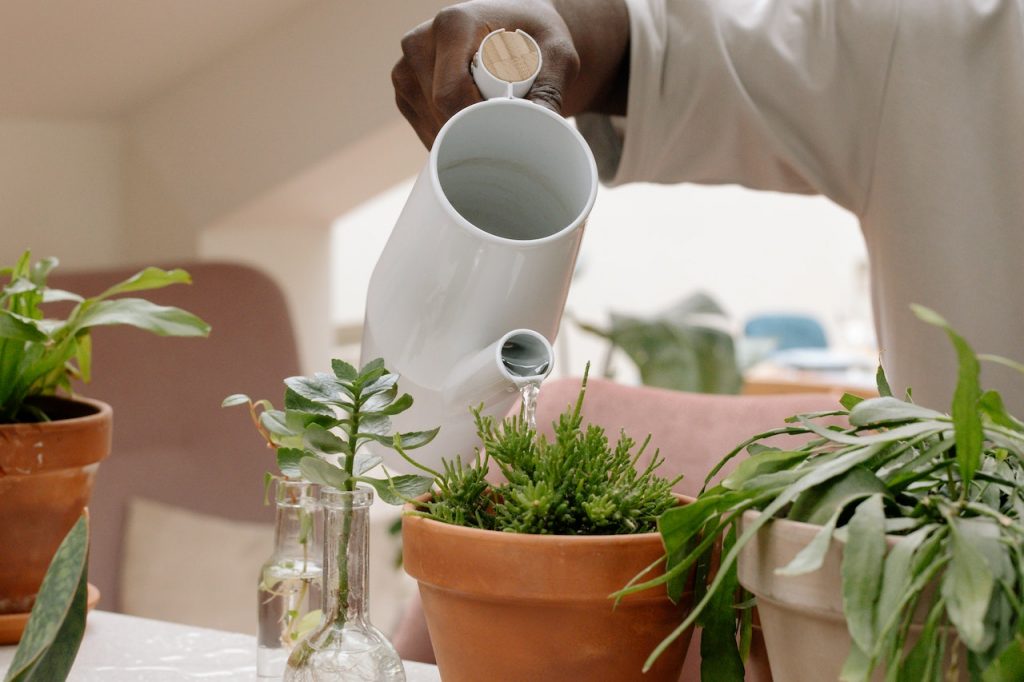
The longer the plant has not been repotted, the more feeding it needs: after all, the soil depleted over time, and the flower has nowhere to take nutrients from, even if it grows in a spacious pot. Remember that you need to choose the fertiliser according to the type of flower.
How to understand that it is time to feed the flower:
- Slow growth,
- Weak, light, elongated stems,
- Too small young leaves,
- Unwillingness to bloom,
- Development of diseases.
Repotting
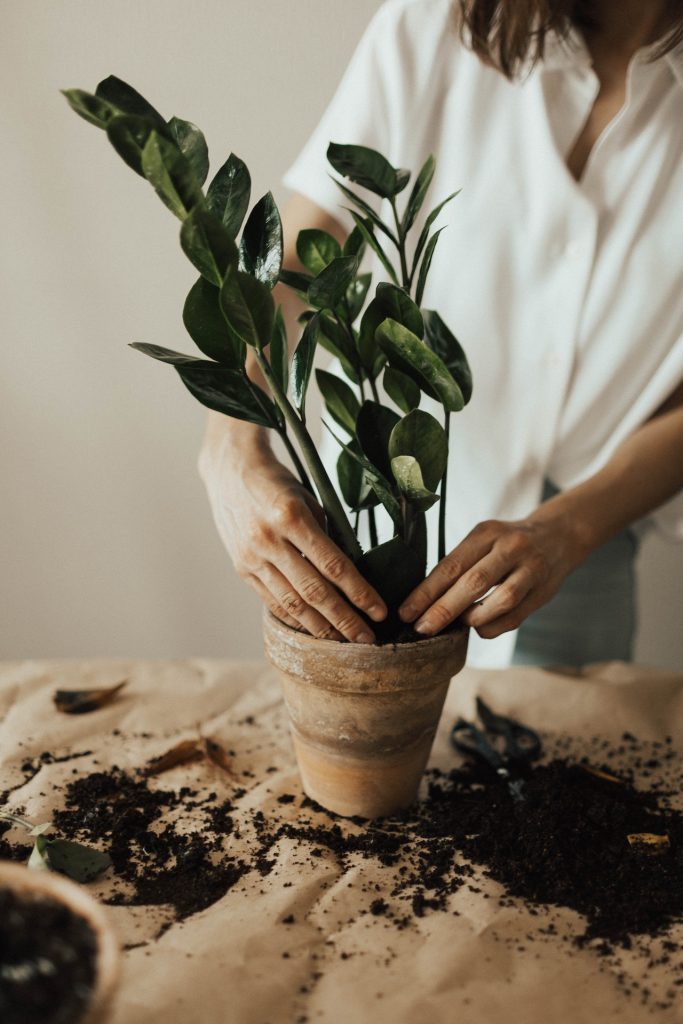
Most plants you see for sale in specialised floristic shops do not need to be repotted. They can stay in their original pots for 1-2 years. It is not necessary to repot cacti and succulents inside terrariums. The bulb for plants is chosen so that each sort has a place to grow for another 2-3 years so there is enough space for it. We wouldn’t recommend repotting the plant immediately into a pot too large. Its depth should not be greater than its height, and its width should be approximately 2/3 of its size.
